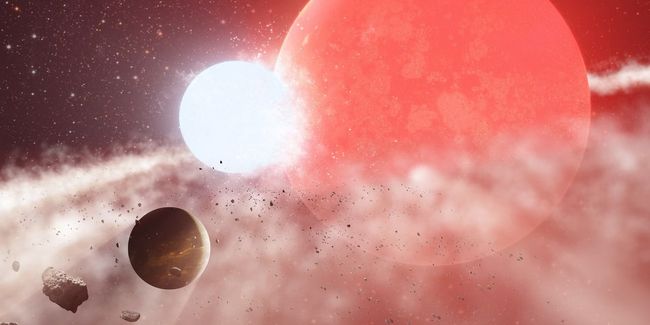Enigmatic ‘Zombie Planet’ Halla Appears to Have Endured the Explosive Demise of Its Star. How Did This Occur?
The Jupiter-sized exoplanet Halla has managed to endure the demise of its star in a way that baffles astronomers.

The gas giant, also known as Halla or 8 Ursae Minoris b, defies expectations as a “hot Jupiter” planet situated 520 light-years away from Earth. Despite facing imminent destruction due to the sudden and violent expansion of its host star, Baekdu, which swelled to thousands of times its original size, Halla mysteriously and miraculously survived this cataclysmic event. Astronomers presented their discoveries in a paper published on June 28 in the journal Nature.
“Typically, being engulfed by a star results in catastrophic consequences for planets in close orbit,” remarked study co-author Daniel Huber, an astronomer and research fellow at the Sydney Institute for Astronomy in Australia. “The realization that Halla managed to survive in the immediate vicinity of its giant star was a complete surprise.”
As Baekdu depleted its hydrogen fuel, the star underwent a substantial expansion, swelling up to 1.5 times the orbital distance of Halla, the researchers explained. According to expectations, Halla should have been completely engulfed and incinerated before the dying Baekdu contracted back to its present size. However, this anticipated scenario did not unfold.
Halla, initially discovered by Korean astronomers in 2015 using the radial velocity method, which detects hidden planets through the wobbling of distant stars, posed a mystery. It orbited the star Baekdu, which had already transformed into a red giant, exhibiting a radius nearly 11 times that of the sun and a mass 1.6 times that of our star.
Throughout most of their lifecycle, stars burn by fusing hydrogen into helium. When they deplete their hydrogen fuel, they start fusing helium, resulting in a significant increase in energy output, causing them to expand into red giants. As stars expand, they consume their inner planets.
To confirm that Halla was one of Baekdu’s original planets, the researchers conducted observations in 2021 and 2022 using the Keck Observatory and the Canada-France-Hawaii Telescope. The findings confirmed the stability of the planet’s near-circular 93-day orbit for over a decade.
Despite this, the astronomers find it highly improbable that Halla could have survived absorption by an expanding red giant star. “We just don’t think Halla could have survived being absorbed by an expanding red giant star,” stated Huber.
Instead, the researchers have narrowed down the possibilities to two scenarios: either Halla formed after Baekdu’s transformation into a red giant, or Baekdu was once part of a binary system with two stars that later merged, preventing either from expanding sufficiently to consume Halla.
“The system was more likely similar to the famous fictional planet Tatooine from Star Wars, which orbits two suns,” explained study co-author Tim Bedding, an astronomy professor at the University of Sydney. “If the Baekdu system originally consisted of two stars, their merger could have prevented any one of them from expanding sufficiently to engulf the planet.”
This article is republished from LiveScience under a Creative Commons license. Read the original article.
Do not forget to share your opinion with us to provide you with the best posts !



0 Comments